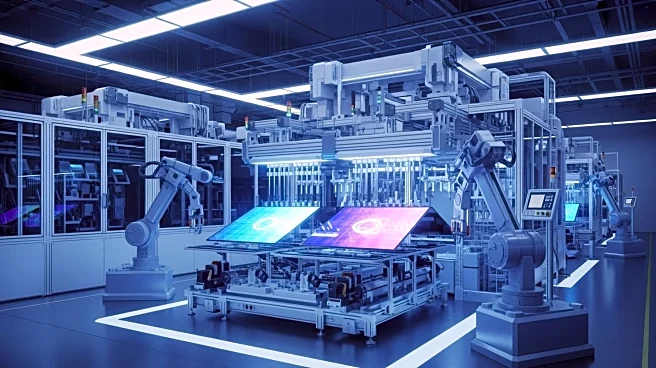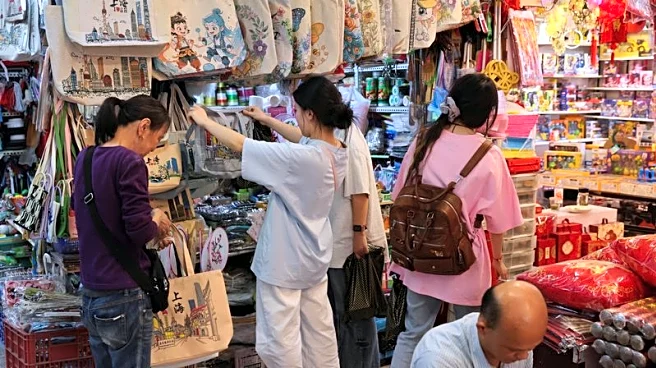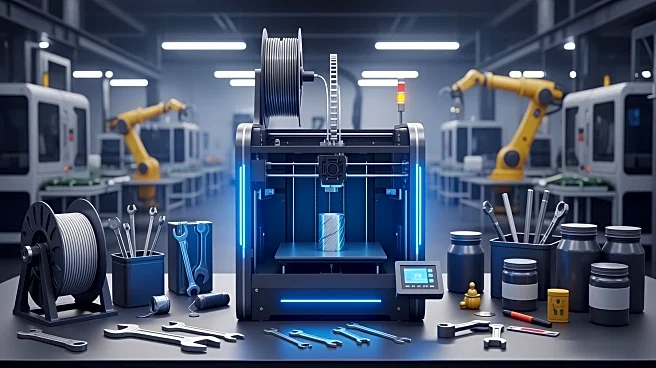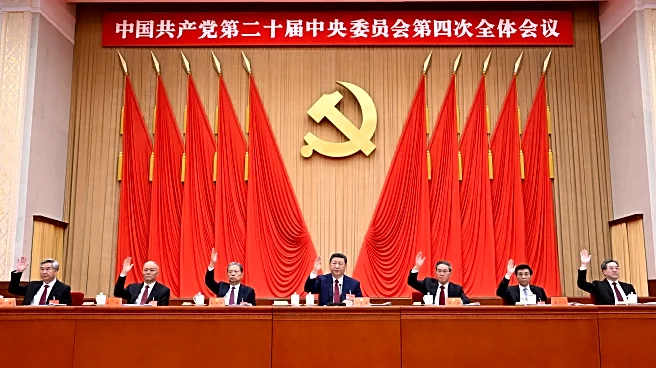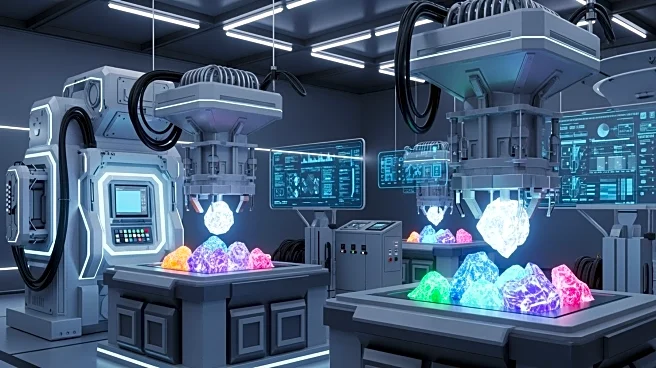What's Happening?
TCL CSOT has commenced construction on a groundbreaking $4.15 billion OLED factory in Guangzhou, China. This facility is set to be the world's first large-scale 8.6-generation OLED plant utilizing inkjet
printing technology to produce RGB OLED panels. The plant aims to manufacture panels for laptops, tablets, and monitors, with mass production expected by 2027. The inkjet printing method is anticipated to reduce material waste and lower manufacturing costs by approximately 20% compared to traditional techniques. TCL's investment in this facility is part of a strategy to integrate the OLED value chain and create a competitive production cluster.
Why It's Important?
The development of TCL's OLED plant represents a significant advancement in display technology, potentially transforming the mid-size OLED market. By reducing production costs, TCL could increase the adoption of OLED panels in consumer electronics, enhancing display quality and affordability. This move may also pressure rival technologies, such as RGB-LED and QD-OLED, to innovate and adjust pricing strategies. The plant's success could lead to increased competition and supply in the OLED market, benefiting consumers and driving technological progress.
Beyond the Headlines
The technical challenges of scaling inkjet printing for mass production at large substrate sizes are significant. TCL must overcome hurdles related to material formulation, nozzle precision, and panel reliability to achieve consistent production quality. Success in this endeavor could position TCL as a leader in OLED technology, influencing industry standards and encouraging further innovation. The broader implications include potential shifts in manufacturing practices and increased competition among display manufacturers.
